This is an update to our post: Arboreal Spiderling Enclosure Set-Up
Update at 1 week:
I was gone for the weekend and we were expecting cooler, rainy weather. Not so! Blueberry dried out more than I would have liked. If anyone wants to know if their enclosure is too dry for a C. versicolor, this is a good example.
Blueberry is thirsty enough to come down onto the substrate in search of water.
It is important to let the enclosure dry out every so often to help prevent mold and mildew however, if left like this much longer it could cause a problem...
...so let's give it a little mist!
...but don't mist with a heavy hand! Too much moisture can be just as problematic as too little.
Update at 10 days:
Notice the enclosure is already quire dry again after 2 days? Keep in mind you'll likely have to mist more often if the air surrounding the enclosure is warm and dry vs. cooler, more humid conditions.
Given some time to settle and hydrate today Blueberry is hangin' out the front door in what we refer to as the "I'm hungry pose"
So let's feed Blueberry!
With my Arboreal Spieling and Arboreal Juvenile enclosure kits I will do one of two things. If I don't have time to watch them eat I might put a roach or two on the substrate. If I have a minute or two I feed using the Upside-Down Method.
The first step is to carefully remove the enclosure lid containing the little arboreal tarantula. Like so:
The tarantula will likely be unsettled when the enclosure is moved. If possible, let the enclosure rest for a few minutes before offering food. This way the tarantula will have a little time to relax after it's been moved and flipped over.
Then add one single appropriate-sized roach and wait:
...Got it!
Carefully flip it rightsize up. If you're gentle enough it won't disturb the tarantula too much. Although the photo is out of focus we can still see this is one happy C. versicolor!
Update 12 days:
Jamie's Tarantulas
Wednesday, November 6, 2019
Sunday, June 9, 2019
Arboreal Spiderling Enclosure Set-Up
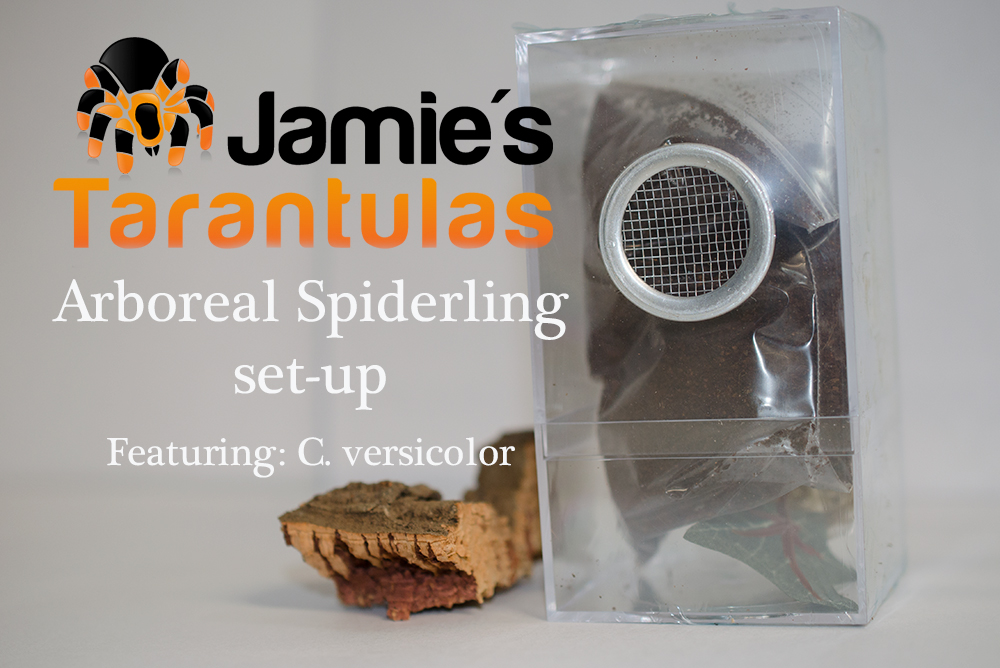
For this tutorial we're going to build an Arboreal Spiderling Enclosure Kit for a baby C. versicolor (Martinique Pink Toe) spiderling.
We will be using hot glue gun to assemble the furnishings. Be sure to get your gun warmed up before you start!
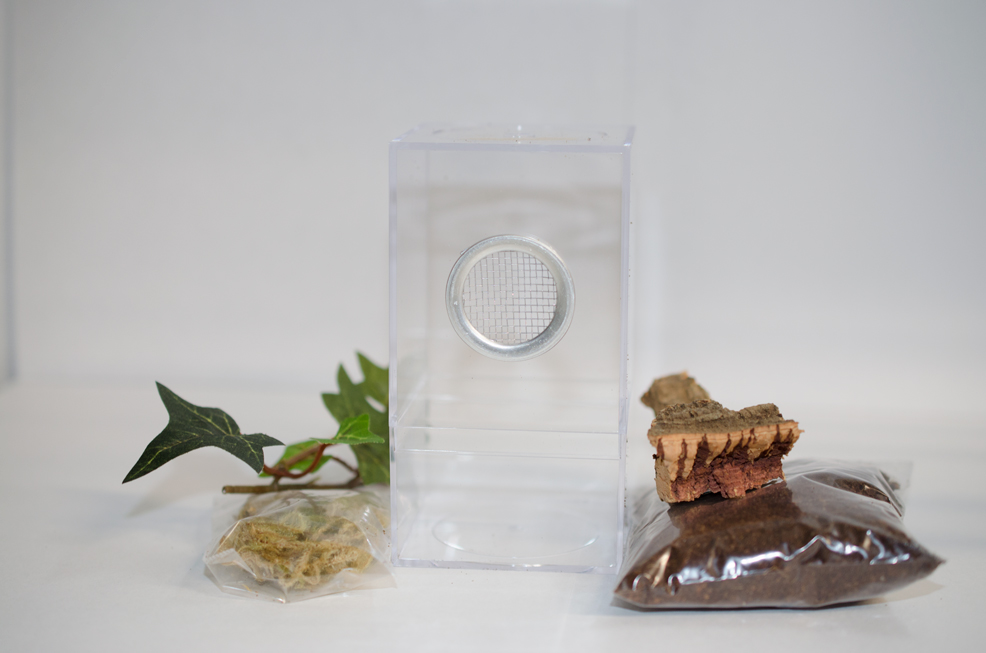
The Arboreal Spiderling Enclosure Kit is recommended for arboreal (tree-dwelling) spiderlings 2" leg-span and under.
The enclosure kit will come wrapped so it's not damaged or doesn't come apart in transit (first photo) after unwrapping the enclosure (second photo) you'll have five parts:
-Cork bark
-Artificial plant
-Cocofiber substrate
-Decorative moss
- 4" x 2.25" x 2.25" Enclosure with 1" vent
As we typically maintain our small spiderlings to drink "dew" from the enclosure walls our spiderling kits do not contain a water bowl.
While traditional enclosures typically open in a location that interferes with the arboreal species webs, the Jamie's Tarantulas Arboreal Spiderling Kit is designed for the comfort and ease of both owner and their tree-dwelling pet.
One of the enclosures many features is it opens from the bottom to avoid damaging the webs/home of the arboreal who likes to build up high.
Before I assemble everything I like to get an idea of where the furnishings are going to go. I want the spiderling to have lots of things to attach it's web to near the top of the enclosure. I also want it to have easy access to the bottom if the enclosure in case it wants to climb down.
Here I'm sizing up the cork bark in the enclosure, trying to get an idea of how to arrange everything.

Ok, looks good.
Let's add some plants and moss. First a little hot glue where we want everything anchored:
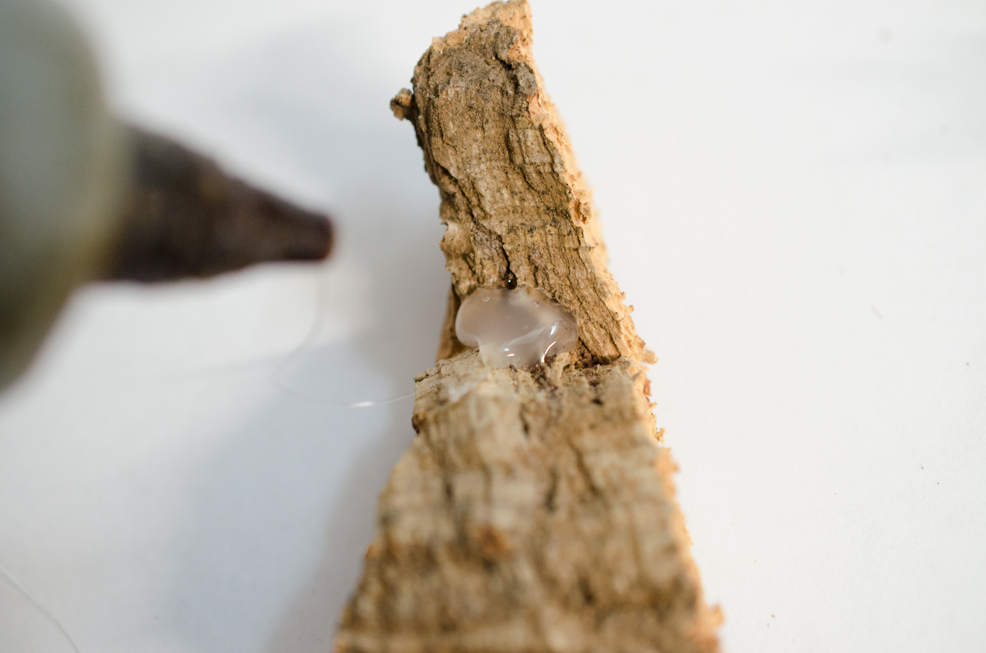
Take the plant stem and carefully put the base in the hot glue puddle. I like to hold the plant by the leaves as to keep my fingers as far from the hot glue as possible. Note: the artificial plant stem may need to be broken down further before assembly.
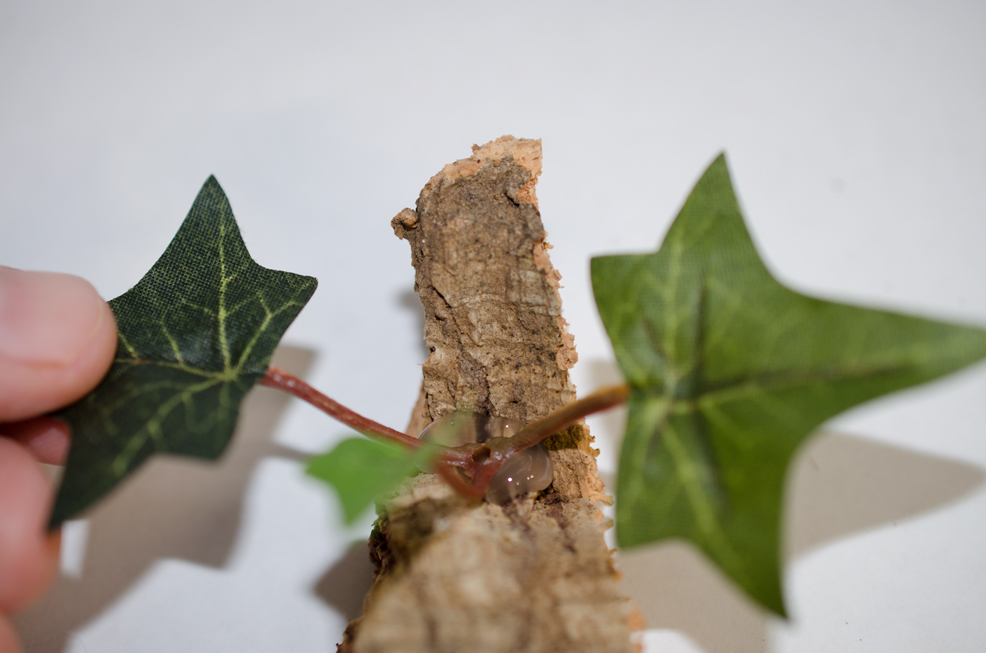
Now cover the hot glue spot and stem base with a wad of moss.
This part can be a little tricky without practice. I recommend to balling up the moss and make sure there is always a safe amount of space between your fingers and the hot glue.
Once the glue was cooled down you can remove the strands of moss that didn't get caught in the glue. I very, very gently tug and if it comes free on it's own I will remove it strand by strand. Also, remove all glue gun residue/strings that might bother the tarantula.
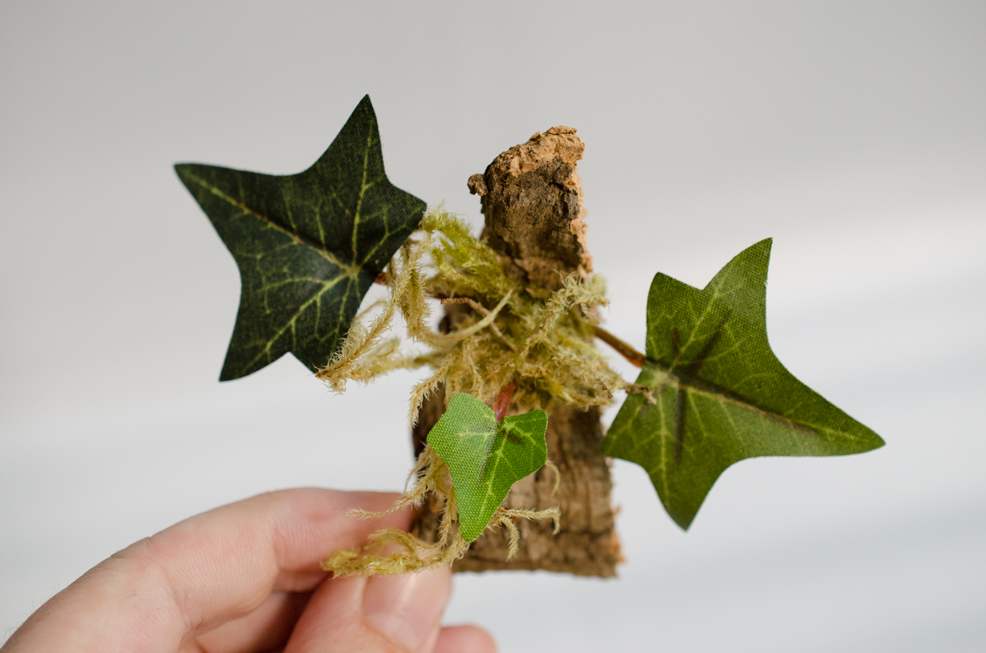
Here is what we have so far. Now for some more glue...
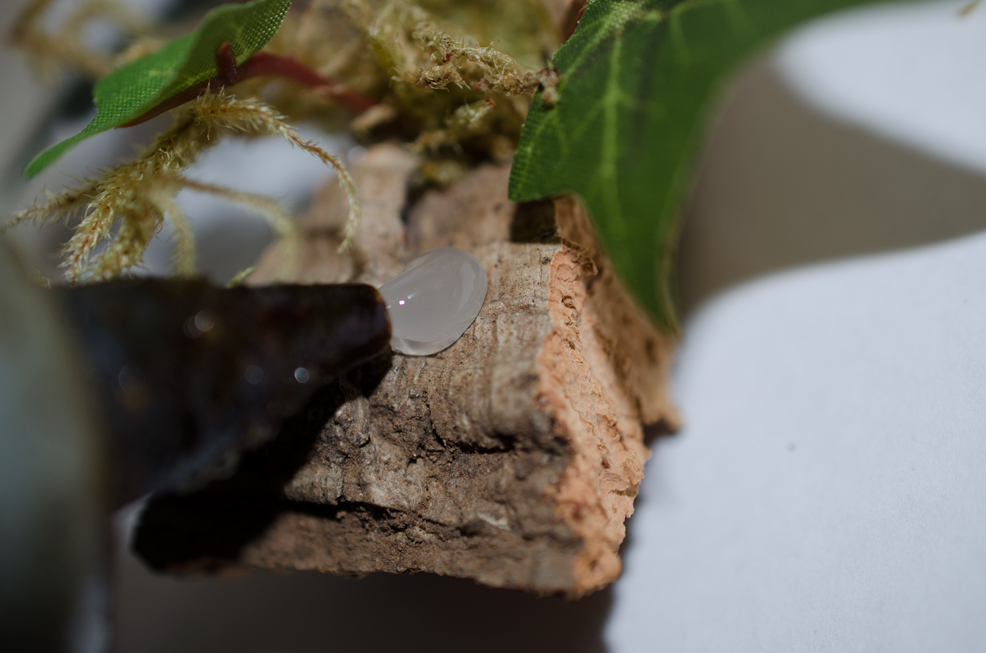
More plants and moss...

Thin the moss, if needed (gently!) and remove any excess hot glue residue
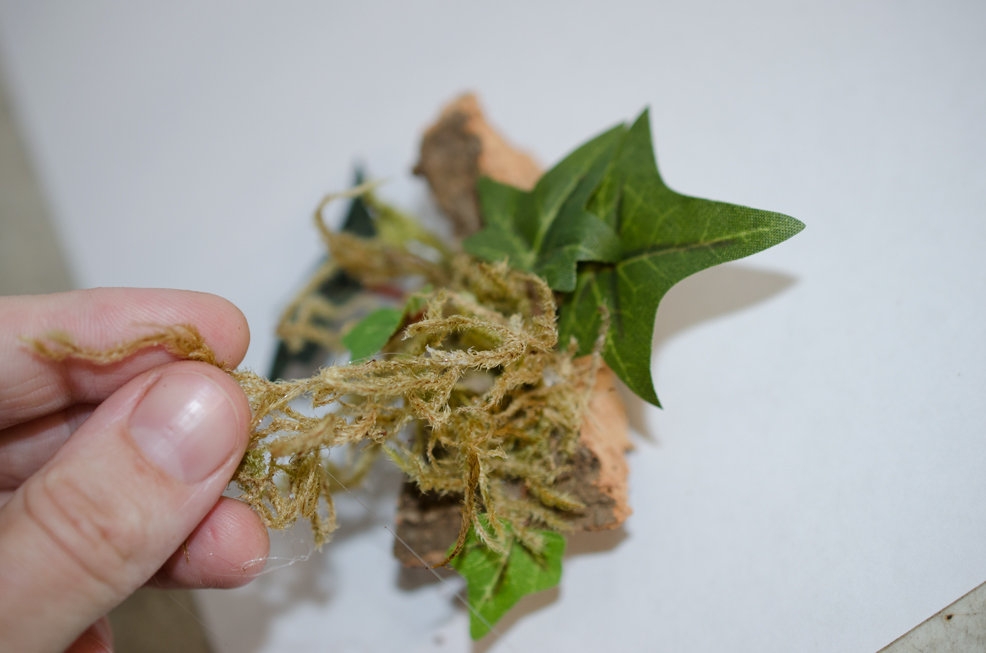
Test fit your cork bark one last time, just to be sure that's where you want it. Take note where the cork comes in contact with the enclosure. Put a one or two pea-sized hot glue spots on the contact points and press and hold where you want the bark to adhere.
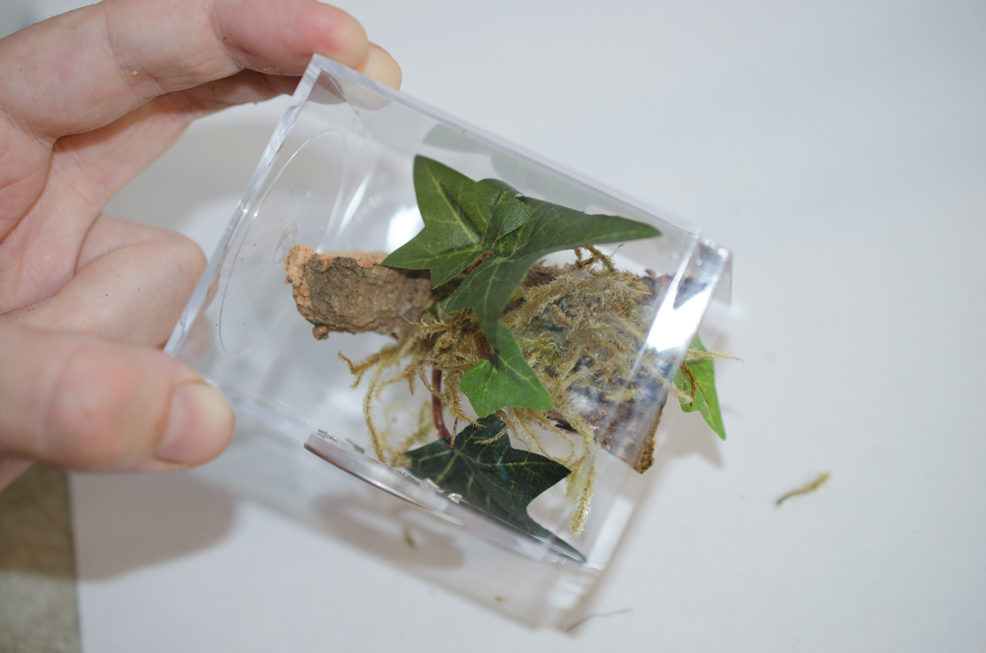
Looks nice!
Make sure the glue is completely cool before adding your tarantula.
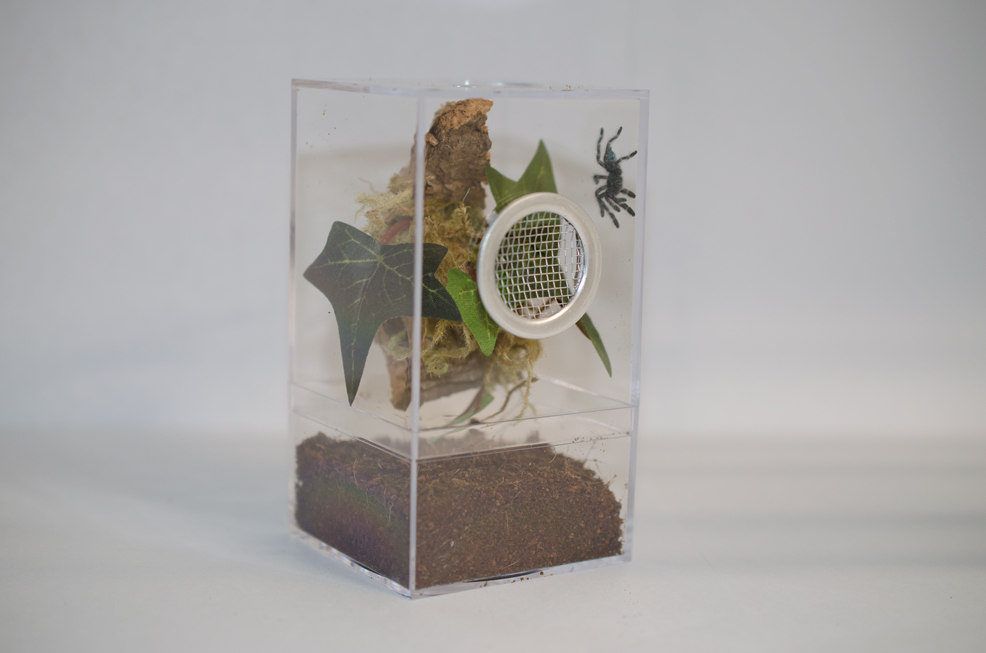
Also, we recommend a light mist so the tarantula has an opportunity to drink.
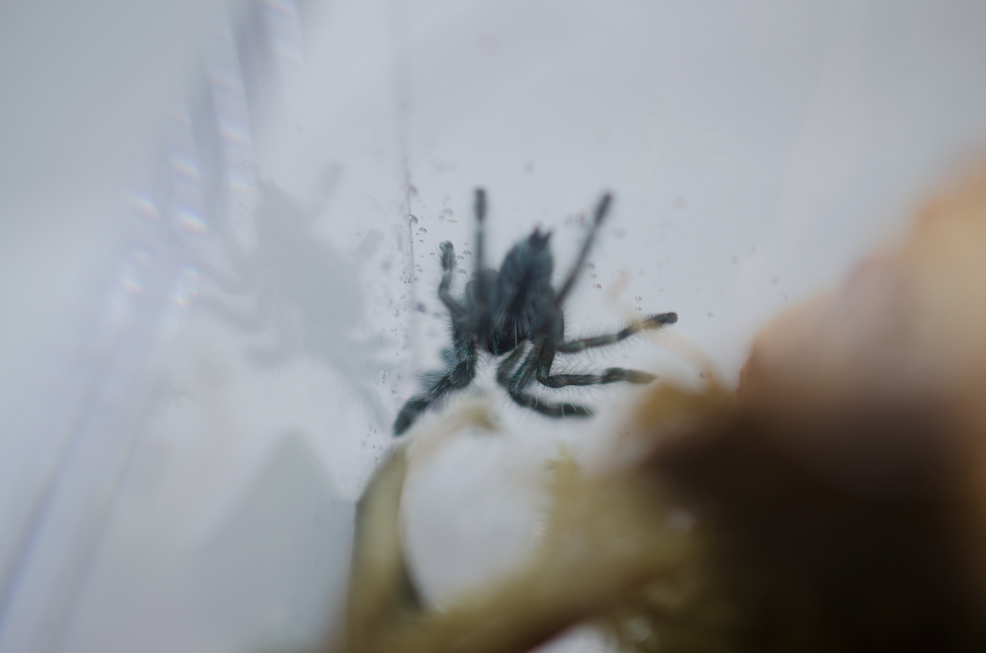
The little guy or gal is likely stressed as can typically be expected when rehoming any tarantula.
Think about it from the slings perspective. This tiny, blue fur-ball can't find the trail back home. It's terrified, lost and exposed in a totally unfamiliar and likely dangerous place.
The sling needs some quiet time to settle in before any feeders are offered. We'll wait about 4 days before trying to feed this C. versicolor.
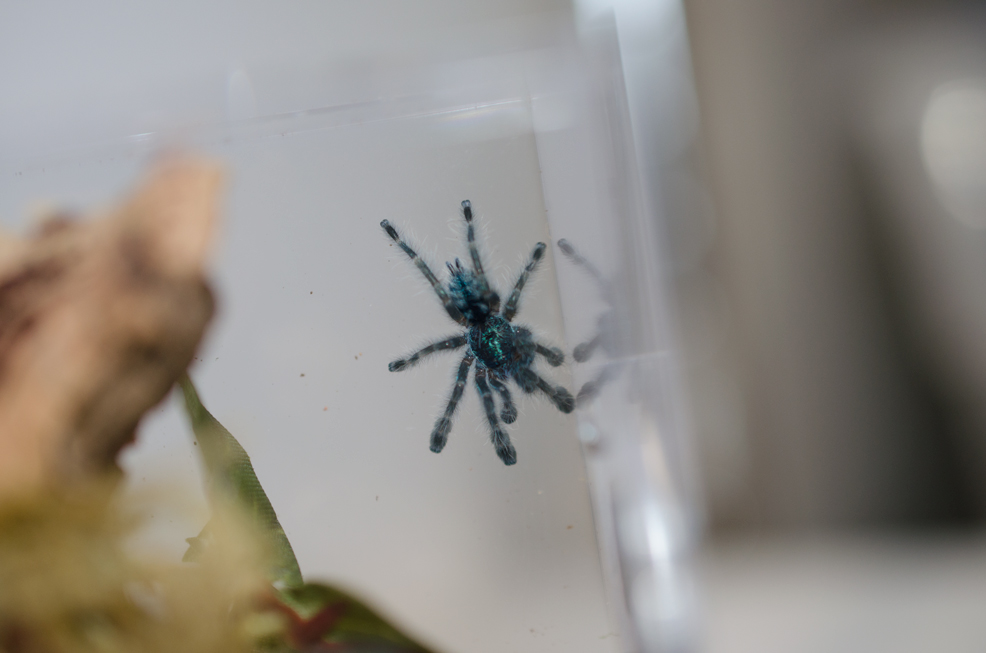
Tuesday, January 22, 2019
M. balfouri communal update
What I've noticed right away doing this colony/blog is the slings are very skittish. If I am quit, enter the room without turning on the lights etc. I can usually catch a few of them out of their burrows & going about their business...
...but as soon as go for the lights, camera, touch the enclosure etc. they retreat into the safety of their burrows so quickly it makes me chuckle. In a blink of an eye they almost look like a reef of anemones fleeing at the hint of danger.
I have to admit they are pretty darn cute! I am having a lot of fun with them however, getting good photos for the blog is easier said than done!
January 10th:
I put about 10-12 pinhead in the enclosure and lightly misted.
January 13th:
The amount of webbing this colony has laid over the past 3 days is pretty impressive. These little guys have been working hard on turning their new house into a home:

This one grabbed the unsuspecting roach in a blink of an eye!

The enclosure had already dried out (after 3 days) so another light mist:

January 15th:
There is even more webbing! A few colony members ate today.

January 17th:
More and more webbing

Dinner with the family:

January 21st:


I have had a few contact me to ask about cannibalism. I typically don't have issues with M. balfouri but I won't know how many are in this colony until it comes time to rehouse. That will be about a year down the road. Even so a missing sibling could have been a result of a complication such as a bad molt. Tarantulas prefer not to be disturbed when they molt. I wonder if the commotion of a colony increases the chance of a bad molt?
So why are some tarantulas communal? Most species you'll just end up with one (very fat) spider!
I have noticed when feeding the community members can very easily tell the difference between a prey item and a colony member. If a sibling misses the initial attack the roach typically flees right into the fangs of another colony member. Almost like they planned it...
I have also seen colony members "fighting" over food. Think of two dogs playing tug-o-war you'll get the idea. Usually the bigger one gets the snack, but sometimes the prey is ripped apart and the little one gets something, too. I have seen them share a large kill for a short time but it always ends in one sibling getting the better end of the deal.
If a community member kills multiple roaches and can't hold them all, a community member might come by and snatch up the unguarded snack.
Tell us your thoughts in the comments below!
...but as soon as go for the lights, camera, touch the enclosure etc. they retreat into the safety of their burrows so quickly it makes me chuckle. In a blink of an eye they almost look like a reef of anemones fleeing at the hint of danger.
I have to admit they are pretty darn cute! I am having a lot of fun with them however, getting good photos for the blog is easier said than done!
January 10th:
I put about 10-12 pinhead in the enclosure and lightly misted.
There is some webbing starting to accumulate around high-traffic areas such as the cork tube and the moss tunnel that runs along the outside of the bark.
This little one grabbed a pinhead that ran by the entrance to the cork tube:
Upon misting this one came out (from the moss tunnel area) to drink:
January 13th:
The amount of webbing this colony has laid over the past 3 days is pretty impressive. These little guys have been working hard on turning their new house into a home:

This one grabbed the unsuspecting roach in a blink of an eye!

The enclosure had already dried out (after 3 days) so another light mist:

January 15th:
There is even more webbing! A few colony members ate today.

January 17th:
More and more webbing

Dinner with the family:

January 21st:


I have had a few contact me to ask about cannibalism. I typically don't have issues with M. balfouri but I won't know how many are in this colony until it comes time to rehouse. That will be about a year down the road. Even so a missing sibling could have been a result of a complication such as a bad molt. Tarantulas prefer not to be disturbed when they molt. I wonder if the commotion of a colony increases the chance of a bad molt?
So why are some tarantulas communal? Most species you'll just end up with one (very fat) spider!
I have noticed when feeding the community members can very easily tell the difference between a prey item and a colony member. If a sibling misses the initial attack the roach typically flees right into the fangs of another colony member. Almost like they planned it...
I have also seen colony members "fighting" over food. Think of two dogs playing tug-o-war you'll get the idea. Usually the bigger one gets the snack, but sometimes the prey is ripped apart and the little one gets something, too. I have seen them share a large kill for a short time but it always ends in one sibling getting the better end of the deal.
If a community member kills multiple roaches and can't hold them all, a community member might come by and snatch up the unguarded snack.
Tell us your thoughts in the comments below!
Thursday, January 10, 2019
Balfouri Communal
Today I am going to put together a 10-sling M. balfouri communal in a Terrestrial Juvenile Enclosure Kit.
How do you like my super-cool ruler? I got it on Earth Day third in Mr. Richardsons third grade class. It has literally survived decades of weekly (ab)use with nothing but a scratch!




I must confess I was didn’t use the half round bark with the kit
(Pictured top left)
A little more moss on the other side
And another silk plant piece
A little more moss to cover up the unsightly joint
A third silk plant piece and a little moss on top
Here are some photos of the completed colony:
I’m leaving out the water bowl that comes with the juvenile kit. These slings are small and will get misted often.
I often tell my customers if their enclosure is a on the dry side to mist so the tarantula can drink the "dew"
This is a great example of an enclosure on the drier side, and how I mist so my slings & juveniles can drink.
I noticed one of the M. balfouri come over and drink for a minute before proceeding to another part of the enclosure.
It’s not that there was anything wrong with the included bark but give me a break here, I had the perfect piece leftover from a larger cork tube I sent out this week and what better excuse to use it than a M. balfouri communal?
(Pictured bottom left)
I am not sure if this is common practice for others who do communal enclosures however, normally when I set up a new tarantula communal I put feeders in there before housing all the spiders.
I figure if someone is hungry enough to eat a community member, if given the choice it would most likely go for food it’s familiar with, the potential food that doesn't have fangs to fight back with.
So in go five pinhead and one small B. lateralis roach.
So in go five pinhead and one small B. lateralis roach.
Keep an eye on that one small B. lateralis roach. This persistent little bug photobombs quite a few pictures in this post!
Normally I would add the moss, silk plants, and other furnishings and mist before adding the tarantula(s) however, I wanted to get clear photos of everyone going in and I have noticed sometimes my camera will want to auto-focus on the silk plants.
So without any further adieu it's time to add the M. balfouri!
M. balfouri #1 goes in and hides before I can snap a photo.
M. balfouri #2 goes in, then shoots out before I can move. It runs across the table...
M. balfouri #2 goes in, then shoots out before I can move. It runs across the table...
Caught it!
Now #2 is safely in the enclosure. Whew!
After about a minute a roach comes in contact with M. balfouri #2. #2 is not interested!
M. balfouri #3 went in without incident, gets close to #2 but moves the opposite way to find a secluded hiding spot.
M. balfouri #3 went in without incident, gets close to #2 but moves the opposite way to find a secluded hiding spot.
M. balfouri #2 is touched by a roach and flees to the other side of the enclosure.
M. balfouri #4 goes in, flees to same corner as #3, touches #3, flees to opposite corner.
M. balfouri #5 in. A roach touched #5 within the first minute, no interest.
M. balfouri #6 goes down into log where I can’t see it .
M. balfouri #7 slowly crawls on top on #5, #5 dashes away and #7 is startled.
After a minute a roach touches #7, #7 flees to a secluded spot.
M. balfouri #8 goes into the cork tube.
M. balfouri #9 gives me a threat pose but otherwise goes in without incident.
M. balfouri #10 goes into the cork tube.
M. balfouri #8 goes into the cork tube.
M. balfouri #9 gives me a threat pose but otherwise goes in without incident.
M. balfouri #10 goes into the cork tube.
I am assembling this enclosure without glue although if you like you can use hot glue to make the arrangement a little more permeant. Here I simply place some moss on the substrate and wedge the silk plant piece between the cork and moss.
Keep in mind I typically recommend adding all the furnishings before adding the tarantula(s)
A third silk plant piece and a little moss on top
Here are some photos of the completed colony:
During the photoshoot #8 and #10 got in a disagreement both were in a threat pose. They both backed away from each other. One calmly left the tube.
I’m leaving out the water bowl that comes with the juvenile kit. These slings are small and will get misted often.
I often tell my customers if their enclosure is a on the dry side to mist so the tarantula can drink the "dew"
This is a great example of an enclosure on the drier side, and how I mist so my slings & juveniles can drink.
I noticed one of the M. balfouri come over and drink for a minute before proceeding to another part of the enclosure.
We will post an update soon!
Subscribe to:
Posts (Atom)


































